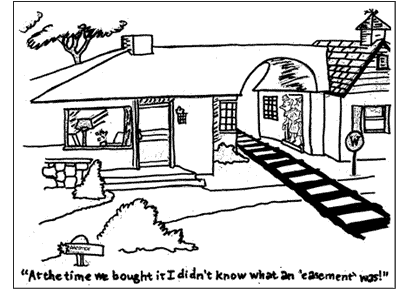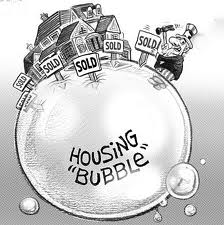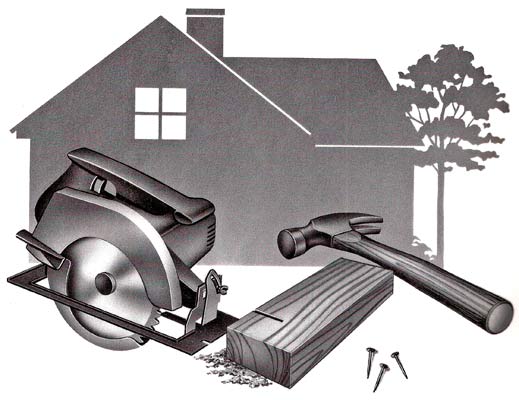
BLOG
Buying a Home with an Easement
If the home you’ve fallen in love with has an easement, you may be wondering how this affects you.
If the home you’ve fallen in love with has an easement, you may be wondering how this affects you. An easement gives a person or entity the right to use part of your land, but only for a very specific reason. For example, a utility company may have an easement on your property to maintain an electric pole. Another example is an easement which allows your neighbor to drive through a portion of your land to access their garage. Easements will be disclosed as part of the sales process and if you’ve discovered that your new purchase is subject to an easement, it’s important to learn the different types and their effect on your use of your land.
Types of Easements
• Appurtenant vs. Gross – An appurtenant easement benefits the property, by allowing access through another’s land, such as the neighbor’s garage example above. A gross easement benefits an individual or entity, such as the utility company example above.
• Private vs. Public – A private easement allows a specific person to access your property while a public easement allows any member of the public to use your land.
• Affirmative vs. Negative – Most easements are affirmative (which is to say they allow something to happen) but some are negative easements, such as preventing a neighbor from building a second story that blocks a view.
Easements are not permanent and can be challenged if the need no longer exists. If your property is subject to an easement. It’s important to understand how it will impact your property before completing the purchase.
———————-
Knowing the value of your home is important. You don’t have to wait until you are thinking of selling. Find your value now. Find your value now: My Home Value
Condominiums – Should You Consider Purchasing One
Condominiums tend fall into the love them or hate them position for buyers
Condominiums are all about communal living, which can be good or bad depending upon your personal views. This type of communal living doesn’t refer to the failed experiments of the sixties wherein hippies packed into a structure and shared everything. Instead, the modern condominium community is all about sharing common spaces as well as rules, rules and more rules.
Condominiums come in all shapes and forms. Condos can be found in a single high rise building in a downtown area or in an apartment complex type of layout in a planned community. The structure isn’t the determining point. Instead, the issue is how the properties are owned.
Unlike a stand alone home, the property lines on a condominium are the walls of the structure. Essentially, you own everything inside the condominium as your individual property. Everything outside the condominium is owned jointly with the people who own the other units. These areas are known as common areas and are subject to group rule.
Every condominium has a homeowners association in one form or another. The association has rules set out by the original developer regarding landscaping and so on. Members of the community are then elected to the board of the association, whereupon the immediately become a focal point of aggravation from individual owners and often wonder why they took the thankless job.
The problem with the association and condos in general is the issue of uniformity. If you desire to change the exterior of your condominium in some way, you must comply with the rules of the association. This means you cannot paint your property a different color, do landscaping and so on. For some people, this isn’t a problem, but others are frustrated they can’t express themselves.
When deciding whether a condominium is a good option for your next purchase, you need to carefully weigh the restrictions of a particular association. If you consider yourself an individual and want to show it, a condominium is probably a very poor choice for you.
Laura Key, BRE 01908085 310.866.8422 Laura.A.Key@gmail.com www.KeyCaliforniaHomes.com
Definition of Prescriptive Easement
Call me if you have some questions about a Prescriptive Easement! I have a team that can help you if you have concerns! Laura Key 310.866.8422
A prescriptive easement creates a right to use another's land for a specific purpose. The easement is created by making use of the land without owner permission for a period of time specified by statute. Interference with a prescriptive easement gives the easement holder cause to bring suit.
Easement in General An easement creates a right to use land that is possessed by another for a specific purpose. One parcel of land, the "dominant tenement," enjoys the benefit of the easement, while the "servient tenement" is the land being used for the easement purpose. Once an easement is validly created, even if not used, it is presumed to be perpetual.
Prescriptive Easement A prescriptive easement is acquired when the servient tenement is used for a specific purpose, for some time without the permission of the owner. Through the continuous use and the owner's failure to stop it, the dominant tenement can acquire the right to use the servient tenement property indefinitely. A prescriptive easement is a type of easement appurtenant, meaning that the holder receives physical use or enjoyment of the property. All who may succeed to title of the dominant tenement will be entitled to the prescriptive easement; the easement need not be mentioned in the conveyance or deed in order to be operative.
Elements Speaking generally, for legal elements are usually required: adverse use (use of the servient property without permission of the owner); open and notorious use (with no attempt at concealment); continuous use for the entire statutory period (required statutory periods vary among states, but the minimum is five years); and hostility, meaning that hte easement user knowes he has no right to use the property. However, individual state' easement laws may display variations, and those with easement issues should consult a legal professional.
Exclusive Use Jurisdictions are split on weather a prescriptive easement requires that adverse use of the property be exclusive in order to fulfill the legal element. A minority of jurisdictions will not allow a prescriptive easement if other parties besides the dominant tenement have also been using the servient tenement adversely for the same use. However, most do not require exclusive use, only that the dominant tenement's right to adversely use the easement "does not depend on a like right in others". In other words, the dominant tenement may still get the prescriptive easement even if the owner or others are also using the tenement in a similar manner.
Termination of Easement As an owner may prevent establishment of a prescriptive easement by effectively ending the dominant tenements adverse use; this can be accomplished by bring suit or physically ejecting the easement user from the property. Easements can also be terminated in several ways; the easement holder can release the servient tenement from the easement; the dominant and servient tenement can merge ownership; or the servient tenement can be condemned. The servient tenement may also invalidate the easement by a sort of "reverse prescription," if the servient tenement uses the easement for a long time and the easement holder "sleeps on his rights."
Source: http://www.ehow.com/about_6501555_definition-prescriptive-easement.html
Economist Quashes Housing Bubble Rumors
I love what I do; however I have reservations about this report. I have had deep conversations with other agents and I firmly feel we are in a danger zone. Your thoughts? Laura Key 310.866.8422
Recently, rumblings of another housing bubble have been emerging, but one economist says with inventories expected to rise soon, the housing market is not at threat.
Rick Sharga, executive vice president with Carrington Mortgage Holdings, told a crowd at the REOMAC 2013 Summit & Expo in Dallas on Monday that the housing market should expect things to get worse before they start improving.
But “this is not the 2005 market,” he said. “We are not creating a bubble.”
Sharga says the lack of available home inventory is the reason why home prices are rising. New-home inventories are at their lowest level in more than 30 years, he said. “Very few markets are anywhere near where we were at the peak,” he said. The markets showing some “bubble-like tendencies” are housing markets that saw the biggest declines, he noted.
LPS Applied Analytics recently predicted that home prices could rise another 35 percent without affecting affordability.
Sharga predicts that by this time next year there will be too many homes for sale. Housing and foreclosure starts are expected to start rising within the next year.
Source: “Carrington’s Sharga: We Are Not Creating Another Housing Bubble,” HousingWire (April 8, 2013)
Loans for Fixer Uppers
Low housing inventory has resulted in a lack of move-in ready homes available for sale. Many buyers, especially first time buyers, tend to overlook properties in need of extensive repairs, but a federally backed lending program enables buyers to roll the cost of necessary repairs into their mortgage, which can sometimes yield a quick return on investment.
Making sense of the story
- The Federal Housing Administration’s 203(k) program provides for loans that cover purchase and renovation costs for single-family homes and multifamilies with up to four units. The total loan amount is based on the property’s appraised value once the repairs are completed. The down payment requirement is 3.5 percent.
- FHA 203(k) loans are not available to investors – borrowers must live in the properties. But some borrowers have used a 203(k) loan to buy and renovate a multifamily property, live in the property for a year or so, refinance into a conventional loan, and then sell the rehabbed property.
- The loans are more expensive than conventional financing, because the interest rates are slightly higher and private mortgage insurance is required.
- Additionally, borrowers must pay a building consultant, who writes the initial estimate of the cost of planned repairs. Fees range from $400 to $1,000, depending on the extent of the repairs. The consultant also ensures that the repairs will bring the house up to government health and safety standards.
- The loans do not cover the addition of luxury items, such as a pool. But allowances are made toward the cost of repairing or removing a pool, as well as for the addition of solar panels.
- Renovations must be made within six months after closing. The contractor is paid in intervals after periodic inspections of how the work is progressing. Borrowers should make sure they hire experienced contractors who understand that they won’t be paid upfront and must adhere to strict timelines.
For more information contact Laura Key, Real Estate Agent at Laura.A.Key@gmail.com
www.KeyCaliforniaHomes.com
Source: New York Times By LISA PREVOST Published: January 17, 2013







